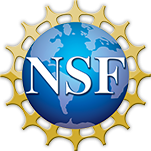Abstract
Despite its immense size, logistical and methodological constraints have largely limited microbiological investigations of the subseafloor basement biosphere. In this study, a unique sampling system was used to collect fluids from the subseafloor basaltic crust via a Circulation Obviation Retrofit Kit (CORK) observatory at Integrated Ocean Drilling Program borehole 1301A, located at a depth of 2667 m of sediment, which serves as a barrier to direct exchange with bottom seawater. At an average of 1.2 × 104 cells ml−1, microorganisms in borehole fluids were nearly an order of magnitude less abundant than in surrounding bottom seawater. Ribosomal RNA genes were characterized from basement fluids, providing the first snapshots of microbial community structure using a high-integrity fluid delivery line. Interestingly, microbial communities retrieved from different CORKs (1026B and 1301A) nearly a decade apart shared major community members, consistent with hydrogeological connectivity. However, over three sampling years, the dominant gene clone lineage changed from relatives of Candidatus Desulforudis audaxviator within the bacterial phylum Firmicutes in 2008 to the Miscellaneous Crenarchaeotic Group in 2009 and a lineage within the JTB35 group of Gammaproteobacteria in 2010, and statistically significant variation in microbial community structure was observed. The enumeration of different phylogenetic groups of cells within borehole 1301A fluids supported our observation that the deep subsurface microbial community was temporally dynamic.

